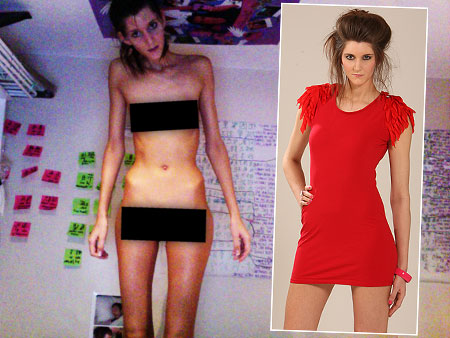
Signs and symptoms
Dissatisfaction with body
pronounced weight loss
Excessive fear of becoming fat
Reduction in food intake and / or food refusal
Preoccupation with calories, food and food preparation
The loss or absence of menstrual periods (in women)
Dry, flaky or cracked skin
Dry, sparse hair on scalp
Pale, soft hair on the face and body
Anorexia nervosa is a psychological disorder most often affects young women between the ages of 12 and 21. in fact, less than 10 percent of all people with anorexia are male. the problem usually occurs in a person with a distorted body image who desperately wants to lose weight. you can start by eliminating high-calorie foods and snacks from your diet, then progress to skipping meals altogether, or eat smaller portions. often, a person with anorexia nervosa may eat only a few small items of food a day, like an apple and carrot sticks. To burn more calories, many patients become obsessive exercise.
Unfortunately, not when the body has a reserve of calories for use as fuel for everyday functions (such as breathing, walking, moving), it begins to burn its own muscle cells in order to get calorie it needs to survive. in fact, the anorexic heart muscle can often be. become so weak and exhausted that stops beating, many victims of severe anorexia die from heart attacks, although it may be in their teens or twenties. other consequences of anorexia include delayed sexual maturation, gastrointestinal disorders (including constipation), and damage to the liver and kidney.
Anorexia is not a specific cause. Risk factors include:
perfectionist personality
High expectations, stress due to multiple responsibilities and / or a very tight schedule
Ambivalence about independence
Conventional medical treatment
PSYCHOTHERAPY, rather than drug therapy, is the first line of treatment for anorexia. A mental health professional trained to treat eating disorders encourages the patient to gain weight by increasing daily caloric intake by 300 calories every two weeks. the therapist also tries to determine the psychosocial issues affecting the image of the body suffers, and try to build their sense of self-esteem and more positive body image. in severe cases, bed rest with supervised meals are called for until the patient has gained 10 to 20 pounds. since the objective in the treatment of anorexia is to encourage individuals to improve on its own, forced or tube feeding is usually avoided. in cases where the person is clinically depressed, an antidepressant can be determined.